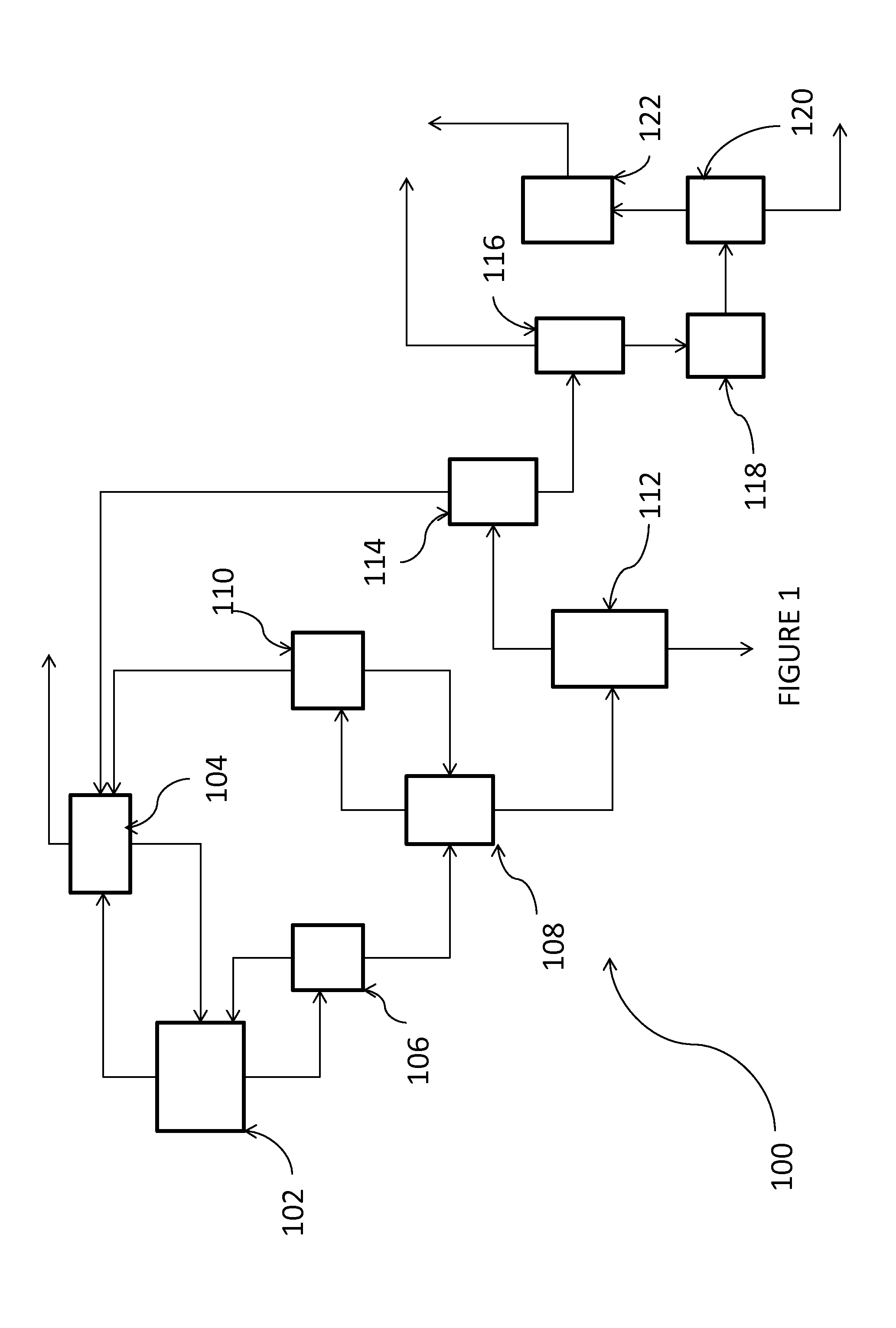Process for the production of chlorinated propenes
- Summary
- Abstract
- Description
- Claims
- Application Information
AI Technical Summary
Benefits of technology
Problems solved by technology
Method used
Image
Examples
example 1
[0063]50 mL 1,2,3-trichloropropane and 500 mg dimethyl 2,2′-azobis(2-methylpropionate) are added to a tubular reactor at a pressure of 150 psig. The reactor is sealed and Cl2 flow started (30% v / v, 200 sccm). The reactor is then heated to 70° C. After 200 min at 70° C., 23% conversion of the TCP is observed, with the product stream comprising 1,1,2,3-tetrachloropropane, 1,2,2,3-tetrachloropropane, 1,1,2,2,3-pentachloropropane, and 1,1,2,3,3-pentachloropropane, with selectivities of 59.7%, 37.2%, 2.0%, and 1.2% respectively. The 1123-tetrachloropropane is then separated from the product mixture, and the reactor purged.
[0064]Carbon tetrachloride (45 mL) is then added to the reactor and the reactor sealed. Cl2 (30% in N2, v / v) is added (5 minutes at 240 sccm, 20 minutes at 200 sccm). The reactor is heated to 70° C. and then sealed (reactor pressure ˜150 psig). A mixture of the 1,1,2,3-tetrachloropropane provided as described above (3 mL) CCl4 (7 mL) and dimethyl 2,2′-azobis(2-methylpro...
PUM
| Property | Measurement | Unit |
|---|---|---|
| Percent by mole | aaaaa | aaaaa |
Abstract
Description
Claims
Application Information
 Login to View More
Login to View More - R&D
- Intellectual Property
- Life Sciences
- Materials
- Tech Scout
- Unparalleled Data Quality
- Higher Quality Content
- 60% Fewer Hallucinations
Browse by: Latest US Patents, China's latest patents, Technical Efficacy Thesaurus, Application Domain, Technology Topic, Popular Technical Reports.
© 2025 PatSnap. All rights reserved.Legal|Privacy policy|Modern Slavery Act Transparency Statement|Sitemap|About US| Contact US: help@patsnap.com

